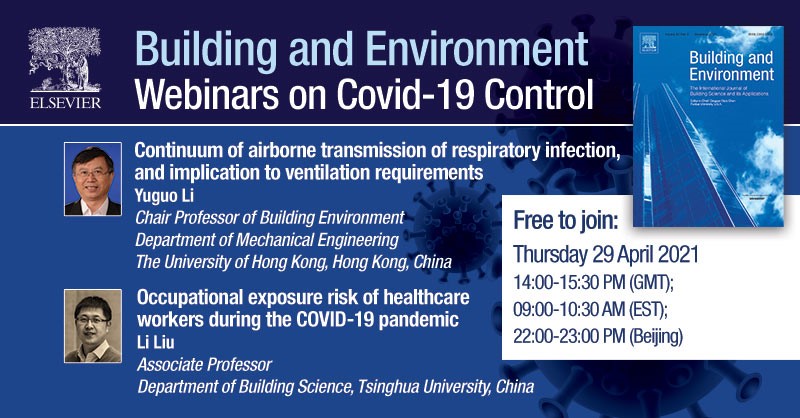
There will be 2 presentations in this 3rd webinar of the series on COVID-19 control, followed by a Question and Discussion session:
Continuum of airborne transmission of respiratory infection, and implication to ventilation requirements, presented by Yuguo Li, Chair Professor of Building Environment, Department of Mechanical Engineering, The University of Hong Kong, Hong Kong, China
Abstract: Most infections of the coronavirus disease 2019 (COVID-19) occurred indoors, while outdoor infections have been much less. Explanation of this difference for close contact transmission may reveal the predominant transmission route of severe acute respiratory syndrome coronavirus 2 (SARS-CoV-2). The presenter will attempt to reconcile the major observed transmission patterns related to the predominant transmission routes in the building environment. A simple continuum model of the short- and long-range airborne transmission of respiratory infection will be discussed. This simple model, together with the pandemic data seems to shed light on the minimum ventilation rates required for minimizing infection in indoor spaces of different activities. In the subsequent analyses of minimum ventilation rates and maximum CO2 concentrations, a generation-inhalation double multiplier effect is found to be important, i.e. more expiration and more inhalation co-exists in an environment when occupants perform heavy exercises, such as in a gym. A paradigm shift towards a better air environment in buildings and cities is forthcoming.
Occupational exposure risk of healthcare workers during the COVID-19 pandemic, presented by Li Liu, Associate Professor, Department of Building Science, Tsinghua University, China.
Abstract: Since the coronavirus disease 2019 (COVID-19) outbreak, reports have revealed a high nosocomial infection rate worldwide. This has reduced the confidence of healthcare workers (HCWs) and caused patients to be afraid of attending hospitals. To provide information on how to affordably control nosocomial infection during the COVID-19 pandemic, we conducted a series of study on HCWs’ exposure in Leishenshan Hospital, Huoshenshan Hospital, Jinyintan Hospital and several Fangcang hospitals. This seminar will discuss the interdisciplinary method of tracing patients' expiratory droplets and droplet nuclei in ICU, isolation wards, CT rooms and other hospital sections. Based on measurement results, we will also discuss the risk known by HCWs and the risk that was ignored.
For more information please see here: https://www.journals.elsevier.com/building-and-environment/webinars or to register directly for this webinar please go here: https://researcheracademy.elsevier.com/workshop/59242ec8-824f-498d-a2b2-8dfa8df34046
